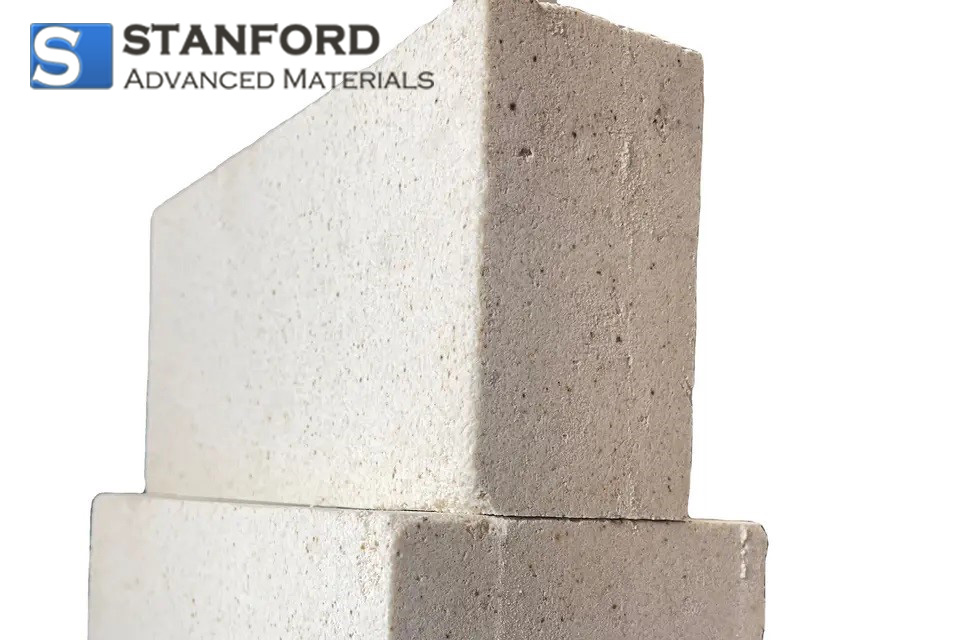AL1823 High-Alumina Brick
| Catalog No. | AL1823 |
| Material | Alumina |
| Color | White or gray |
| Density | ≥3g/cm3 |
| Water absorption | ≤5% |
High-Alumina Firebrick is a brick body that can withstand combustion and high temperature. Its refractoriness is around 1700 °C. Stanford Advanced Material (SAM) provides high-quality High-Aluminum brick to meet your needs.
Related products: Acid Resist Brick
High-Alumina Brick Description
The High-Alumina brick has high sintering temperature, high refractoriness under load, high compressive strength, high-temperature flexural strength, and low thermal expansion efficiency.
High Alumina Bricks are produced with selected bauxite chamotte as the main raw material, fired at 1450-1470 °C by the advanced process with strict quality control.
High-Alumina Brick Applications
High-Alumina Firebricks are mainly used in the construction of various industrial furnaces, such as masonry iron-making furnaces, steelmaking furnaces, coke ovens, glass furnaces, cement kilns, steam boilers, various heat treatment furnaces, heating furnaces, etc., as well as other high-temperature furnaces.
Different types of refractory bricks should not be mixed. When firebricks are built, the same type of refractory clay as refractory bricks should be used as cement.
High-Alumina Brick Specifications
|
type |
HAB-75 |
HAB-65 |
HAB-55 |
|
Al2O3≥ % |
75 |
65 |
55 |
|
Fe2O3< % |
2.5 |
2.4 |
2.6 |
|
bulk density g/cm³ |
2.5 |
2.5 |
2.3 |
|
comprehension stress Mpa |
70 |
60 |
50 |
|
refractoriness under load °C |
1510 |
1460 |
1420 |
|
refractory temperature °C |
1790 |
1770 |
1770 |
|
porosity % |
22 |
23 |
24 |
|
PLC % |
-0.3 |
-0.4 |
-0.4 |
High-Alumina Brick Packaging
Our high-Alumina bricks are carefully handled to minimize damage during storage and transportation and to preserve the quality of our products in their original condition.
High-Alumina Brick FAQ
What are the advantages of High-Alumina Bricks compared to Fireclay Bricks?
High-Alumina Bricks have higher refractoriness, better resistance to slag attack, and improved mechanical strength at elevated temperatures.
How should High-Alumina Bricks be stored before use?
High-Alumina Bricks should be stored in a dry and ventilated environment to avoid moisture absorption, which can affect their performance.
What type of bonding material is used for High-Alumina Bricks?
High-temperature cement or mortar is typically used for bonding High-Alumina Bricks.
LATEST RECOMMENDED
GET A QUOTE
Send us an Inquiry now to find out more Information and the latest prices,thanks!

